Cars
Follies of the Madmen #445
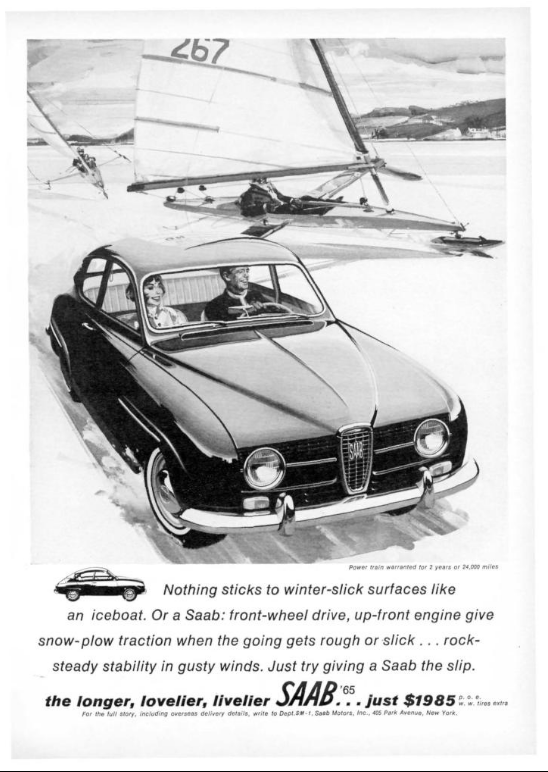
Yes, it's perfectly safe to drive your one-ton car on the same surface as the 150-lb iceboat.
Source.
Posted By: Paul - Sun Sep 22, 2019 -
Comments (6)
Category: Business, Advertising, Daredevils, Stuntpeople and Thrillseekers, Death, Sports, 1960s, Cars
“Breakfast” by Cyriak
Posted By: Paul - Fri Jul 19, 2019 -
Comments (3)
Category: Annoying Things, Daredevils, Stuntpeople and Thrillseekers, Death, Destruction, Food, Highways, Roads, Streets and Traffic, Surrealism, Foreign Customs, Fictional Monsters, Cars
Water Bottle Warning
A water bottle left on a car seat may potentially be a fire hazard. How? Because the water can act as a magnifying glass, concentrating the sun's rays and setting the upholstery on fire.This was news to me. During past road trips, I've left water bottles on the car seat many times.
Via Book of Joe
Posted By: Alex - Fri May 24, 2019 -
Comments (3)
Category: Stupid and/or Dangerous Products, Cars
Cow Dung AC
Photos posted on Facebook by Rupesh Gauranga Das who writes:It’s in Amdavad
To counter 45 degrees heat temperatures and protect car from getting hot
Mrs. Sejal shah has plastered her car with cow dung


The Indian Express offers some further explanation:
I have to say, Mrs. Sejal Shah did a very professional-looking job of applying the cow dung to her car.
Posted By: Alex - Wed May 22, 2019 -
Comments (5)
Category: Cows, Cars
The Jetway 707
Built by American Quality Coach. Introduced in 1968. Its design was based on the 1966 Oldsmobile Toronado. Some more info from coachbuilt.com:A complete line of AQC hearses, ambulances, combination cars and limousines were planned, but unfortunately all of their working capital was tied up in the tooling for their first run of airport limos, and when they failed to sell, the firm was forced to abandon the other coaches. A current owner believes that only 52 Jetways were built between 1968-1970, although professional car historian Bernie DeWinter believes that the number is closer to 150.
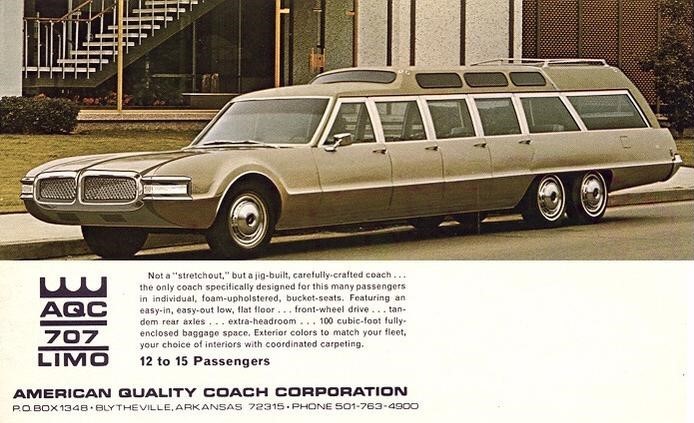
Posted By: Alex - Mon May 20, 2019 -
Comments (2)
Category: Motor Vehicles, Cars, 1960s
Hardee’s Road Runner and Ernie
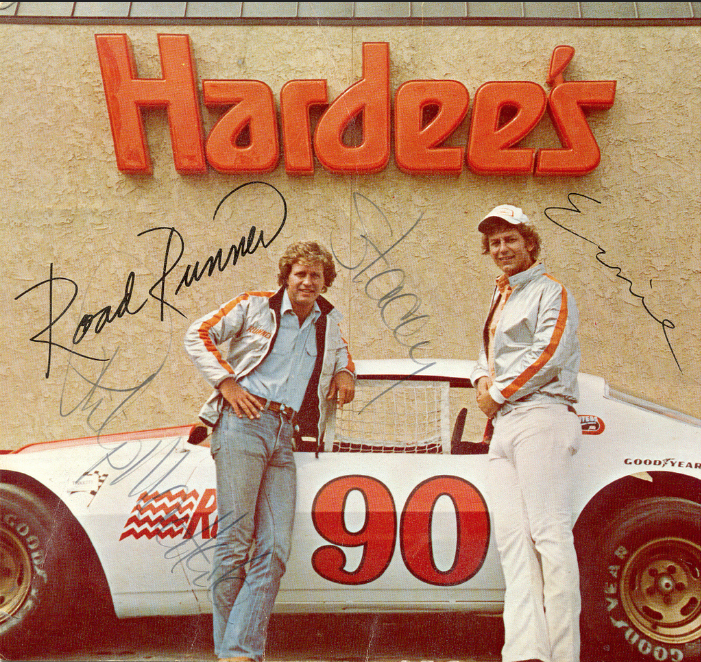
Two lame-o's seeking to capitalize on SMOKEY AND THE BANDIT popularity are employed to endorse burgers.
Many, many more Hardee's commercials here.
Posted By: Paul - Sun Feb 24, 2019 -
Comments (2)
Category: Business, Advertising, Fads, Stereotypes and Cliches, Junk Food, 1970s, Cars
The car that’s like a bicycle
Nasser Al Shawaf was frustrated by the fact that he didn't get any exercise when he drove to work. So he teamed up with Dutch firm BPO and together they've created a car that has bicycle pedals instead of a gas pedal. So, you have to pedal to get your car to move. The faster you pedal, the faster it goes. The brake is controlled with a hand lever. The details:I suppose it would provide a disincentive to speeding if you had to pedal like crazy to keep going fast. So in that sense it's similar to the Deaccelerator that I posted about recently. Though it might make it hard to overtake people. After all, what if you got tired as you were trying to frantically pedal? And what if you were in mixed driving conditions where you had to switch rapidly from slow to fast speeds? How easy would it be to transition from slow to fast mode? Overall, I can only see this having very limited appeal.
More details.
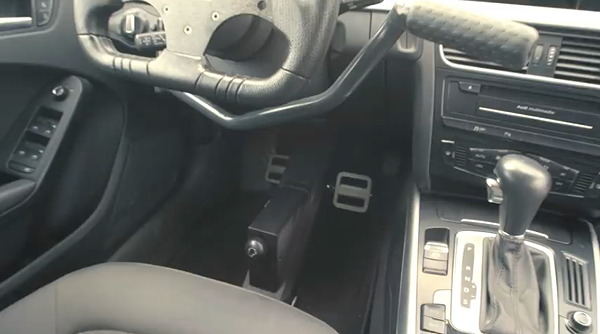
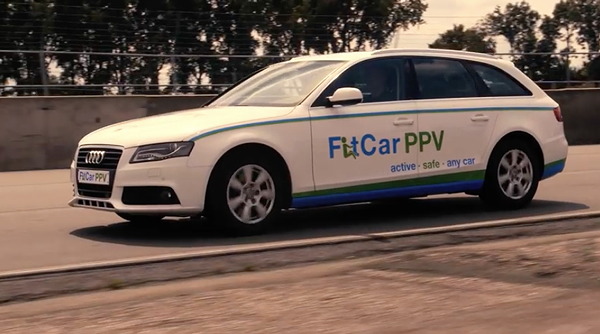
Posted By: Alex - Sun Jan 20, 2019 -
Comments (4)
Category: Bicycles and Other Human-powered Vehicles, Inventions, Cars
The Deaccelerator
Richard Schulman's solution to the problem of speeding: make it harder for motorists to step on the gas pedal. From the Chicago Tribune (Nov 20, 1986):Schulman invented it in the mid-1980s, and even started a company, the Deaccelerator Corporation, to market it. As of 2005, he was still publishing about it, but evidently the idea met with resistance (pun intended) since I'm not aware of any cars equipped with the device. The people who need it most would be exactly the ones who would refuse to buy a car that had one.
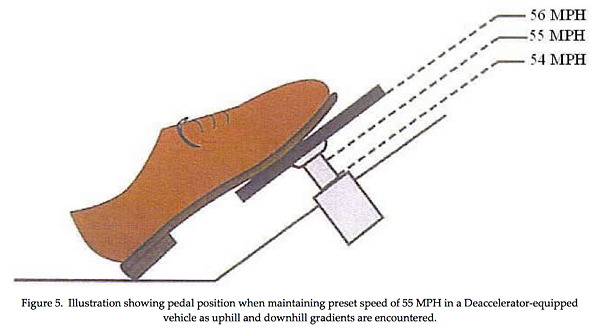
Posted By: Alex - Sun Jan 06, 2019 -
Comments (6)
Category: Inventions, 1980s, Cars
GPS of the 1920s
I can think of one obvious problem with mounting the map in front of the windshield.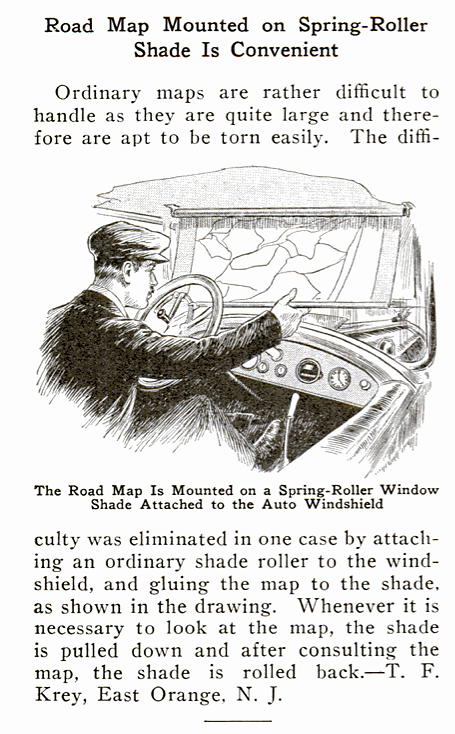
Posted By: Alex - Mon Nov 26, 2018 -
Comments (2)
Category: Geography and Maps, 1920s, Cars
Assembling a Maverick
Thanks to WU-vie MarkMcD, I was alerted to the existence of this great commercial, the inverse of my earlier post on disassembling a Beetle.
Posted By: Paul - Wed Nov 14, 2018 -
Comments (3)
Category: Advertising, Reader Recommendation, 1970s, Cars

| Who We Are |
|---|
| Alex Boese Alex is the creator and curator of the Museum of Hoaxes. He's also the author of various weird, non-fiction, science-themed books such as Elephants on Acid and Psychedelic Apes. Paul Di Filippo Paul has been paid to put weird ideas into fictional form for over thirty years, in his career as a noted science fiction writer. He has recently begun blogging on many curious topics with three fellow writers at The Inferior 4+1. Contact Us |




